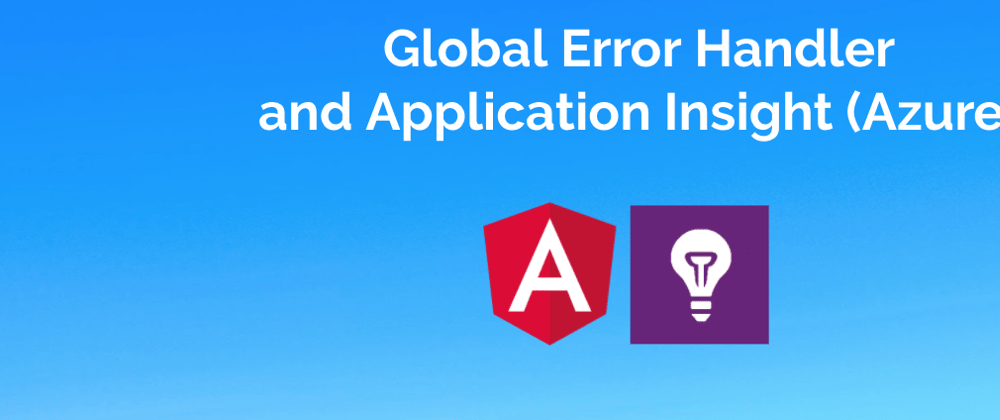We don't like errors, but they will happen anyway, so it's important to have a centralized way to handle errors in our angular app. We want to catch, identify and take actions with them.
In this post we will:
- Implement global error handler in angular
- Add Application Insights (aka AI) sdk
- Track errors in AI
Implement global error handler in angular
Angular makes our life easier catching the errors globally thank to ErrorHandler class, so let's see how to implement it
- Create Global Error Handler service and implement ErrorHandler class
import { Injectable, ErrorHandler } from "@angular/core";
import { HttpErrorResponse } from "@angular/common/http";
@Injectable({
providedIn: "root",
})
export class GlobalErrorHandler implements ErrorHandler {
constructor() {}
handleError(error: Error | HttpErrorResponse) {}
}
- Update app.module.ts providers
import { BrowserModule } from "@angular/platform-browser";
import { NgModule, ErrorHandler } from "@angular/core";
import { AppRoutingModule } from "./app-routing.module";
import { AppComponent } from "./app.component";
import { HttpClientModule } from "@angular/common/http";
import { GlobalErrorHandler } from "./services/global-error-handler";
@NgModule({
declarations: [AppComponent],
imports: [BrowserModule, HttpClientModule, AppRoutingModule],
providers: [{ provide: ErrorHandler, useClass: GlobalErrorHandler }], // Our service added
bootstrap: [AppComponent],
})
export class AppModule {}
Add Application Insights sdk
We need to add this dependency in our app
npm i --save @microsoft/applicationinsights-web
Now let's create a service to send exceptions to AI
import { Injectable } from "@angular/core";
import { ApplicationInsights } from "@microsoft/applicationinsights-web";
import { environment } from "src/environments/environment";
@Injectable({
providedIn: "root",
})
export class ApplicationInsightService {
appInsights: ApplicationInsights;
constructor() {
this.appInsights = new ApplicationInsights({
config: {
connectionString: environment.appInsightsConfig.connectionString, // provided by Azure
/* ...Other Configuration Options... */
},
});
this.appInsights.loadAppInsights();
this.appInsights.trackPageView();
}
logError(error: Error) {
this.appInsights.trackException({ exception: error });
}
}
And then integrate it with our global error handler service
import { Injectable, ErrorHandler } from "@angular/core";
import { HttpErrorResponse } from "@angular/common/http";
import { ErrorService } from "./error.service";
import { LogService } from "./log.service";
@Injectable({
providedIn: "root",
})
export class GlobalErrorHandler implements ErrorHandler {
constructor(
private errorService: ErrorService,
private logService: LogService
) {}
handleError(error: Error | HttpErrorResponse) {
if (error instanceof HttpErrorResponse) {
// Server error
alert(this.errorService.getHttpError(error));
} else {
// Client Error
this.logService.logErrorOnApplicationInsight(error);
alert(this.errorService.getClientSideError(error));
}
// Always log errors
this.logService.logError(error);
}
}
logService is just a wrapper to take log actions
import { Injectable } from "@angular/core";
import { ApplicationInsightService } from "./application-insight.service";
import { HttpErrorResponse } from "@angular/common/http";
@Injectable({
providedIn: "root"
})
export class LogService {
constructor(private applicationInsightService: ApplicationInsightService) {}
logErrorOnApplicationInsight(error: Error) {
return this.applicationInsightService.logError(error);
}
logError(error: Error | HttpErrorResponse) {
console.error(error);
}
}
Track errors in AI
To be able to see errors we send from the app we need to
- Create AI artifact (need a resource group first)
- Get connection string and add it into our app (you will find it in Azure portal)
- Throw an error from our app and track exception (check example app)
This is how the errors look in AI

References




















